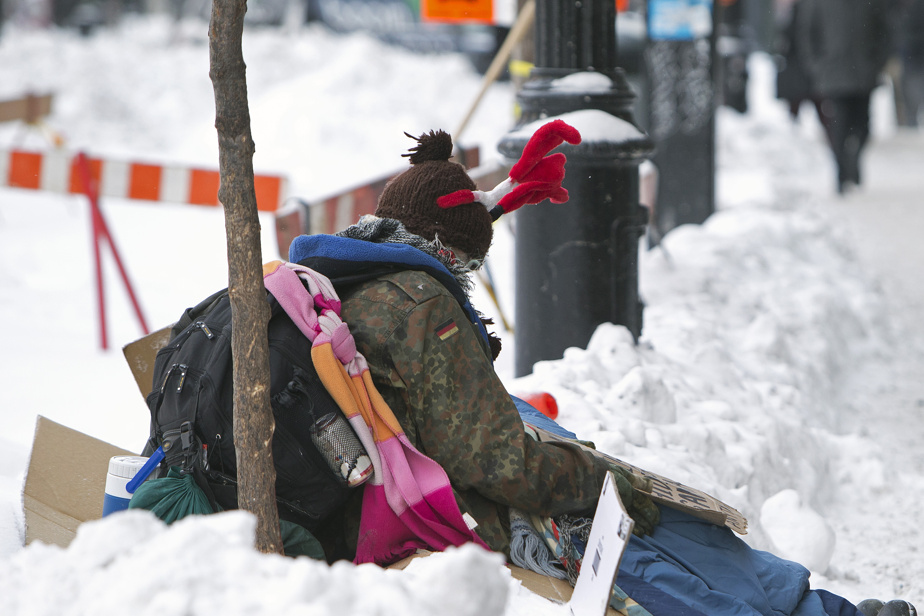Homeless shelters are so overflowing in cold weather that the City of Montreal had to trigger emergency measures twice in February to alleviate the problem, as it does in the event of a major flood or fire.
This was noted on Wednesday by the City’s Homelessness Commissioner, in a rare public outing that accompanies the publication of an “alarm signal” in the form of an open letter.1.
“This is the first time that homelessness and the cold have been considered a disaster,” said Serge Lareault, the commissioner, in an interview with The Press. “It is a mechanism that is not ordinary. We do not trigger emergency measures all the time and for fun. But it shows that we have reached a rather worrying situation. »
For what ? “Because there is overflow in the refuges, because it is cold, because there is danger of death. »

PHOTO SARAH MONGEAU-BIRKETT, LA PRESSE ARCHIVES
Serge Lareault, commissioner for people experiencing homelessness for the City of Montreal
Mr. Lareault pointed out that the overflow of shelters for people experiencing homelessness had recently been added to the official criteria that allow the City of Montreal to trigger emergency measures, such as for natural disasters. This change is “historic”, he said.
These declarations allow the City, for example, to mobilize civil security teams and release the necessary funds more quickly. It is not, however, a declaration of a state of emergency, like the one in force in Montreal when the COVID-19 pandemic was raging.
1600 seats
The two declarations of emergency measures led to the opening of temporary shelters during the last cold spells. The downtown YMCA, near the intersection of Stanley and Sainte-Catherine streets, served each time.
“Able to accommodate 80 people, this place will benefit from the presence of workers as well as security guards hired by the agglomeration, who will ensure the proper functioning, indicated the City on February 24. A room will also be made available exclusively to women who visit the site. »
According to Serge Lareault, several dozen people used this emergency shelter.
“We don’t do this for nothing,” he said. “It’s because there is a lack of places in the usual network. » When a cold snap is imminent, a committee meets and examines the occupancy status of the shelters.
Montreal currently has 1,600 emergency places spread over 31 reception sites. In addition to the “simple” lack of places, the admission criteria of certain facilities also push homeless people towards emergency shelters.
“People who find themselves in the cold at night are people who are experiencing mental health and addiction issues. Who are in a state of intoxication. Who are not accepted or are not able to go to regular shelters,” said Mr. Lareault.
What Montreal lacks are shelters capable of welcoming this clientele, taking care of it and stabilizing it. These are the people you see in the street at night.
Serge Lareault, commissioner for people experiencing homelessness for the City of Montreal
Discouragement and Solutions
In office as commissioner for seven years, Serge Lareault rarely speaks in the public space despite the importance that the issue of homelessness has taken on in Montreal since the start of the COVID-19 pandemic. He points to his working days as “12 to 14 hours” for the past few years.
“When the post of commissioner was created, there were a lot of expectations. People would like me to be in the public square to claim,” he said. But you have to understand “that I have a job that is sometimes much more in the shadows”, particularly in terms of advising the administration and elected officials.
But this time, as the Quebec budget is approaching, Mr. Lareault thought it important to draw attention to the homelessness crisis that the metropolis is going through.
“What struck me a lot in the last few months was the number of calls from Montrealers telling me how discouraged they are about the situation. People come to the conclusion that there is no solution. But that’s not true, there are solutions,” he said.
“The cry of alarm that we are sending to the City of Montreal is that we have to step on the accelerator. Senior governments need to invest in shelters, invest in social housing. It comes out in dribs and drabs, social housing. »
